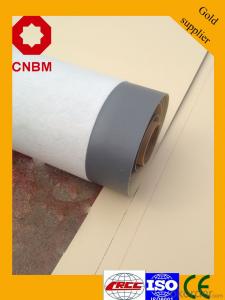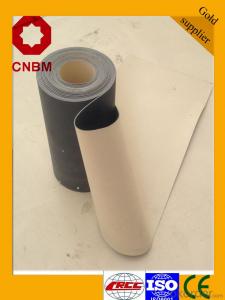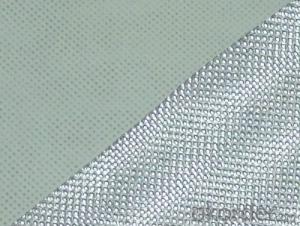Waterproof/Water-resistant Membrane For Roof
- Loading Port:
- Tianjin
- Payment Terms:
- TT OR LC
- Min Order Qty:
- 1000 m²
- Supply Capability:
- 10000 m²/month
OKorder Service Pledge
OKorder Financial Service
You Might Also Like
Product description
Polyvinyl chloride PVC waterproof membrane is a kind of excellent performance of polymer waterproof material,PVC resin as the main raw material,add all kinds of special additive and anti-aging composition,the use of advanced equipment and advanced technology extrusion rolling is made.The product has the tensile strength and elongation high shrinkage of small,low temperature soft good,long life and other advantages, the products wide 1.2m to 3.0m, the thickness of 0.8-2.0 mm(special specifications can be customized),stable performance,reliable quality,construction is convenient.
Application Scope
The products are widely used in all kinds of civil construction,subway,tunnel,water conservancy,landfill site,chemical industry,metallurgy and other areas of waterproof seepage control,corrosion engineering
Features:
Excellent anti-aging property.
Puncture- resistant.
Welding construction,
High tensile strength, good elongation, good dimensional stability.
Good plasticity.
It has self-extinguishing from fire property.
Materials surface is smooth, fast color, stain resistance.
More wide, Wastage become less when being used.
Type:
N1—Exposed PVC waterproof membrane.
(It is mainly used as details treatment for exposed roof waterproof project)
N2—Non-exposed PVC waterproof membrane.
(It is mainly used as details treatment for non-exposed roof waterproof project)
L1—Exposed PVC waterproof membrane with fabric
(It is mainly used for exposed roof waterproof project)
L2—Non-exposed PVC waterproof membrane with fabric.
(It is mainly used for non-exposed roof waterproof project)
W1—Exposed reinforced PVC waterproof membrane .
(It is mainly used for steel structure roof exposed waterproof project)
W2—Exposed reinforced PVC waterproof membrane .
(It is mainly used for steel structure roof non-exposed waterproof project)
Advantages

Technical Parameters
No. | Item | Index | |||||
| 1 | Thickness of resin layer of the middle fabric ,mm≥ | - | - | 0.40 | 0.40 | 0.40 | |
| 2 | Tensile performance | Max tensile strength,N/cm ≥ | - | 120 | 250 | - | 120 |
| Tensile strength,NPa ≥ | 10 | - | -10 | - | - | ||
| Max elongation% ≥ | - | - | 15 | - | - | ||
| Breaking elongation % ≥ | 200 | 150 | - | 200 | 100 | ||
| 3 | Heat treatment size change rate%≤ | 2.0 | 1.0 | 0.5 | 0.1 | 0.1 | |
| 4 | Cold bonding | -25°c No cracks | |||||
| 5 | Watertightness | 0.3mPa,2h waterproof | |||||
Packaging & Shipping
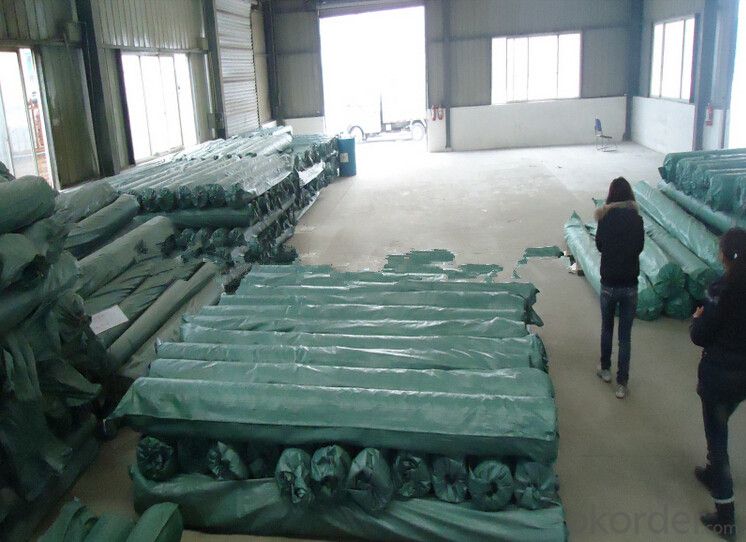
product show
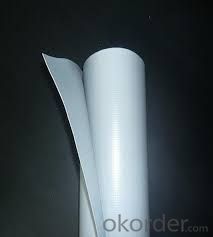
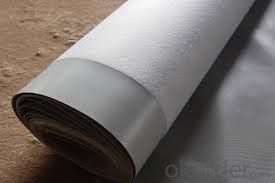
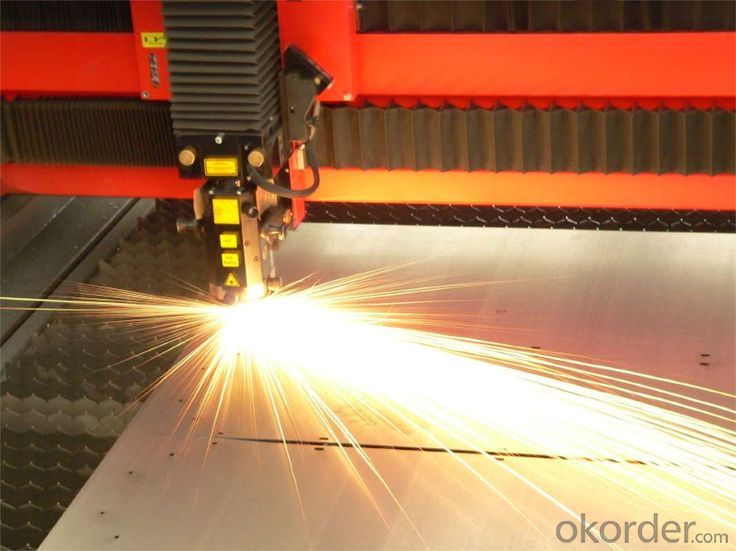
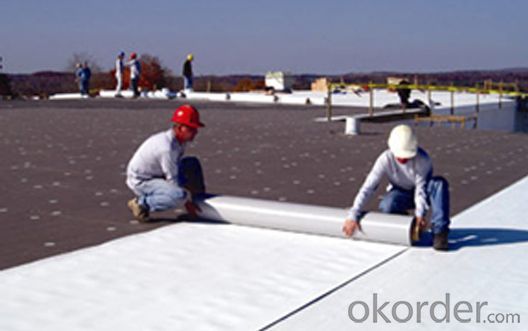



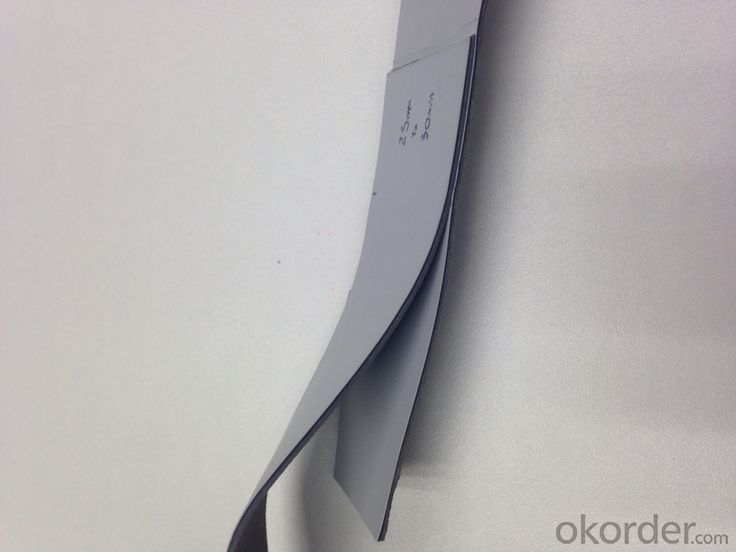
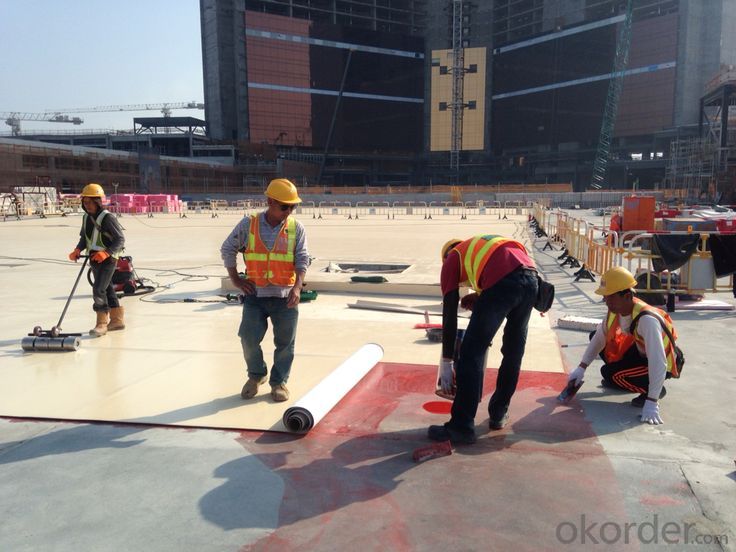
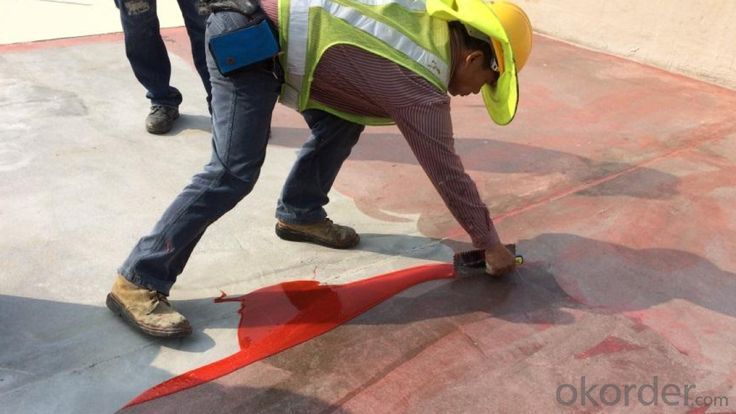
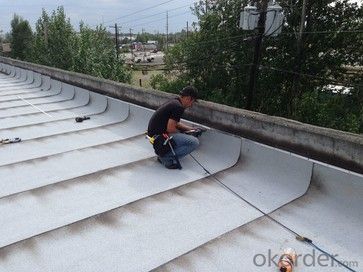
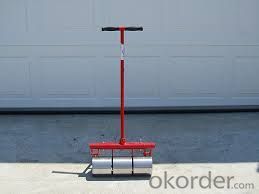
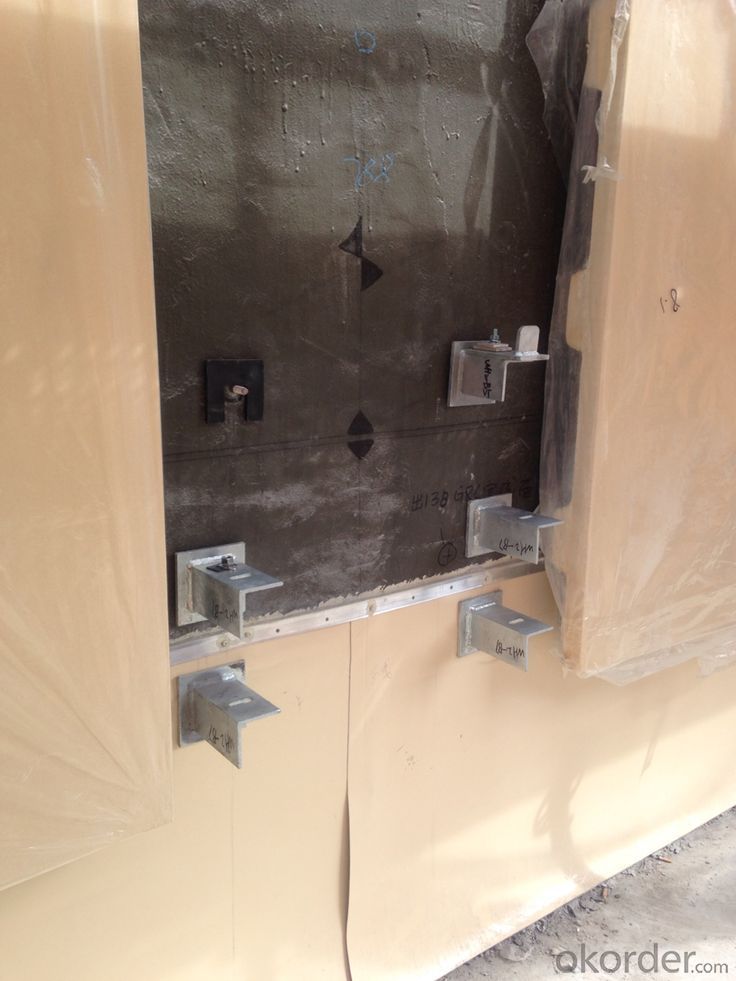
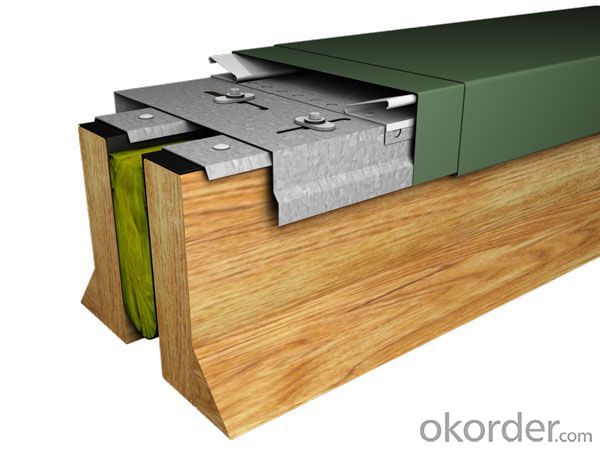

FAQ
Q: What's the delivery time ?
A: 3-5 days for 1-600 rolls, 10-15 days for container.
Q: What's the payment terms ?
A: TT/LC
Q: How do you make replacement with quality problems ?
A: New replacement will be packed into your next order or send to you directly after receive video or photo about quality problems
- Q: How does a waterproofing membrane handle differential settlement?
- A waterproofing membrane is designed to provide a barrier against water infiltration and protect the underlying structure from moisture damage. However, when it comes to handling differential settlement, the performance of the waterproofing membrane can be affected. Differential settlement refers to the uneven settling of the ground or the building foundation, which can lead to variations in the height or level of different parts of the structure. This can create stress and movement in the building, potentially affecting the waterproofing membrane. To address differential settlement, waterproofing membranes are typically designed to be flexible and able to accommodate minor movements without compromising their effectiveness. They are often made from materials such as modified bitumen, polyurethane, or rubberized asphalt, which have inherent elasticity and can stretch or contract to some extent. In cases of minor differential settlement, where the movement is within the tolerances of the membrane, it can adjust and remain intact, maintaining its waterproofing capabilities. However, if the settlement is significant or beyond the membrane's capacity to flex, it may cause the membrane to crack or tear, leading to potential water leakage. To mitigate the impact of differential settlement, additional measures may be taken during the installation of the waterproofing membrane. This could include incorporating stress relieving elements such as expansion joints or using specialized installation techniques that allow for movement. These measures help to distribute the stress caused by settlement and reduce the strain on the waterproofing membrane. It is important to note that while waterproofing membranes are designed to handle some level of differential settlement, they are not a solution for structural issues or significant settlement problems. In cases of severe settlement, it is crucial to address the underlying cause of the settlement and potentially involve a structural engineer to determine the appropriate remediation measures. In conclusion, a waterproofing membrane can handle differential settlement to a certain extent by being flexible and accommodating minor movements. However, it is essential to consider the severity of settlement and implement additional measures during installation to ensure the long-term effectiveness of the waterproofing system.
- Q: What are the common mistakes to avoid when installing a waterproofing membrane?
- Some common mistakes to avoid when installing a waterproofing membrane include inadequate surface preparation, improper selection of the membrane material, improper seam sealing, insufficient coverage or overlap of the membrane, and failure to test for leaks before covering the membrane.
- Q: How does a waterproofing membrane handle construction vibrations?
- A waterproofing membrane is designed to withstand construction vibrations by providing a flexible and durable barrier against potential damage caused by these vibrations. Its composition and installation techniques ensure that it can absorb and dissipate the energy generated by construction activities, minimizing the risk of any cracks or leaks that could compromise its waterproofing effectiveness.
- Q: Can a waterproofing membrane protect against mold or mildew growth?
- Yes, a waterproofing membrane can help protect against mold or mildew growth. Mold and mildew thrive in damp and moist environments, and a waterproofing membrane creates a barrier that prevents water from seeping into the building structure. By keeping the area dry, it greatly reduces the chances of mold or mildew growth. Additionally, waterproofing membranes often have anti-microbial properties that inhibit the growth of mold and mildew even further. However, it's important to note that while a waterproofing membrane can provide significant protection against mold and mildew, it is not a foolproof solution. Proper ventilation and regular maintenance are also essential to prevent these issues.
- Q: Are there any specific building code requirements for using a waterproofing membrane?
- Different jurisdictions have specific building code requirements when it comes to using a waterproofing membrane. These requirements often include certain standards that the membrane must meet, as well as instructions for its installation provided by the manufacturer. The building codes may specify the type of membrane to be used, its minimum thickness, and the method by which it should be installed. For instance, the International Building Code (IBC) mandates that waterproofing membranes must be listed and labeled by an approved testing agency. The code also demands that the membrane be installed in a way that offers continuous protection and can withstand expected structural movements and environmental conditions. Apart from the type and installation requirements, building codes may also outline the procedures for testing and inspecting waterproofing membranes. This is done to guarantee that the membrane is correctly installed and will effectively prevent moisture intrusion, thus safeguarding the building against potential damage and deterioration. To ensure compliance with these requirements and to have a waterproofing membrane that meets the necessary standards, it is crucial to consult the local building code or seek assistance from a qualified professional.
- Q: Does a waterproofing membrane prevent water infiltration through concrete or other building materials?
- Yes, a waterproofing membrane is designed to prevent water infiltration through concrete or other building materials. It acts as a protective barrier that is applied to the surface of the material, forming a water-resistant layer. This membrane can be made from various materials such as bitumen, rubberized asphalt, or liquid polymers. When properly installed, it can effectively prevent water from seeping through the concrete or other building materials, thus protecting the structure from potential water damage or moisture-related issues.
- Q: Can a waterproofing membrane be painted or coated?
- Yes, a waterproofing membrane can be painted or coated. However, it is essential to use a paint or coating specifically designed for use on waterproofing membranes. These types of paints or coatings are typically elastomeric, meaning they can stretch and move with the membrane without cracking or peeling. Additionally, the paint or coating should be compatible with the waterproofing membrane material to ensure proper adhesion and longevity. Before applying any paint or coating, it is advisable to clean and prepare the surface according to the manufacturer's instructions. It is also crucial to follow the recommended application process and allow sufficient drying and curing time for the paint or coating. Overall, painting or coating a waterproofing membrane can enhance its appearance, provide additional protection against UV rays and environmental elements, and extend its lifespan.
- Q: Can a waterproofing membrane be used on brick walls?
- Yes, a waterproofing membrane can be used on brick walls. Brick is a porous material that can absorb water and moisture, making it susceptible to damage and deterioration over time. Applying a waterproofing membrane on brick walls helps to prevent water penetration and protect the structural integrity of the bricks. The membrane acts as a barrier, preventing water from seeping into the bricks while still allowing moisture to evaporate. This helps to keep the bricks dry and reduces the risk of water-related issues such as efflorescence, mold, and mildew. Additionally, a waterproofing membrane can also enhance the thermal insulation properties of the brick walls by reducing heat loss and improving energy efficiency. It is important to choose a waterproofing membrane specifically designed for use on masonry surfaces to ensure proper adhesion and long-lasting protection.
- Q: Can a waterproofing membrane be used in areas with heavy rainfall or high water tables?
- Yes, a waterproofing membrane can be used in areas with heavy rainfall or high water tables. Waterproofing membranes are specifically designed to prevent water infiltration and can effectively protect structures from water damage. These membranes are made from materials such as bitumen, rubber, or polyurethane, which provide a barrier against moisture. They are installed on the exterior side of walls, roofs, or foundations to create a watertight seal. In areas with heavy rainfall or high water tables, it is crucial to use a high-quality and durable waterproofing membrane that can withstand the constant exposure to water. Additionally, proper installation techniques and regular maintenance are essential to ensure the effectiveness of the waterproofing system.
- Q: Can a waterproofing membrane be used for a parking garage?
- Yes, a waterproofing membrane can be used for a parking garage. A waterproofing membrane is designed to provide a barrier against water infiltration, protecting the underlying structure from moisture damage. In a parking garage, where exposure to water and moisture is common due to rain, snow, and vehicle fluids, a waterproofing membrane can be a crucial component of the building envelope system. It can be applied to the concrete surfaces, including the floor and walls, to prevent water from seeping into the structure and causing deterioration, corrosion, or damage to the integrity of the parking garage. Additionally, a waterproofing membrane can also help to mitigate the risk of efflorescence, mold, and mildew growth, which can be common in damp environments. Therefore, using a waterproofing membrane in a parking garage is an effective way to ensure the long-term durability and functionality of the structure.
Send your message to us
Waterproof/Water-resistant Membrane For Roof
- Loading Port:
- Tianjin
- Payment Terms:
- TT OR LC
- Min Order Qty:
- 1000 m²
- Supply Capability:
- 10000 m²/month
OKorder Service Pledge
OKorder Financial Service
Similar products
Hot products
Hot Searches
Related keywords

